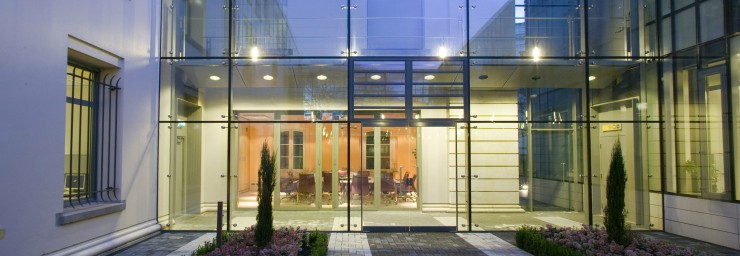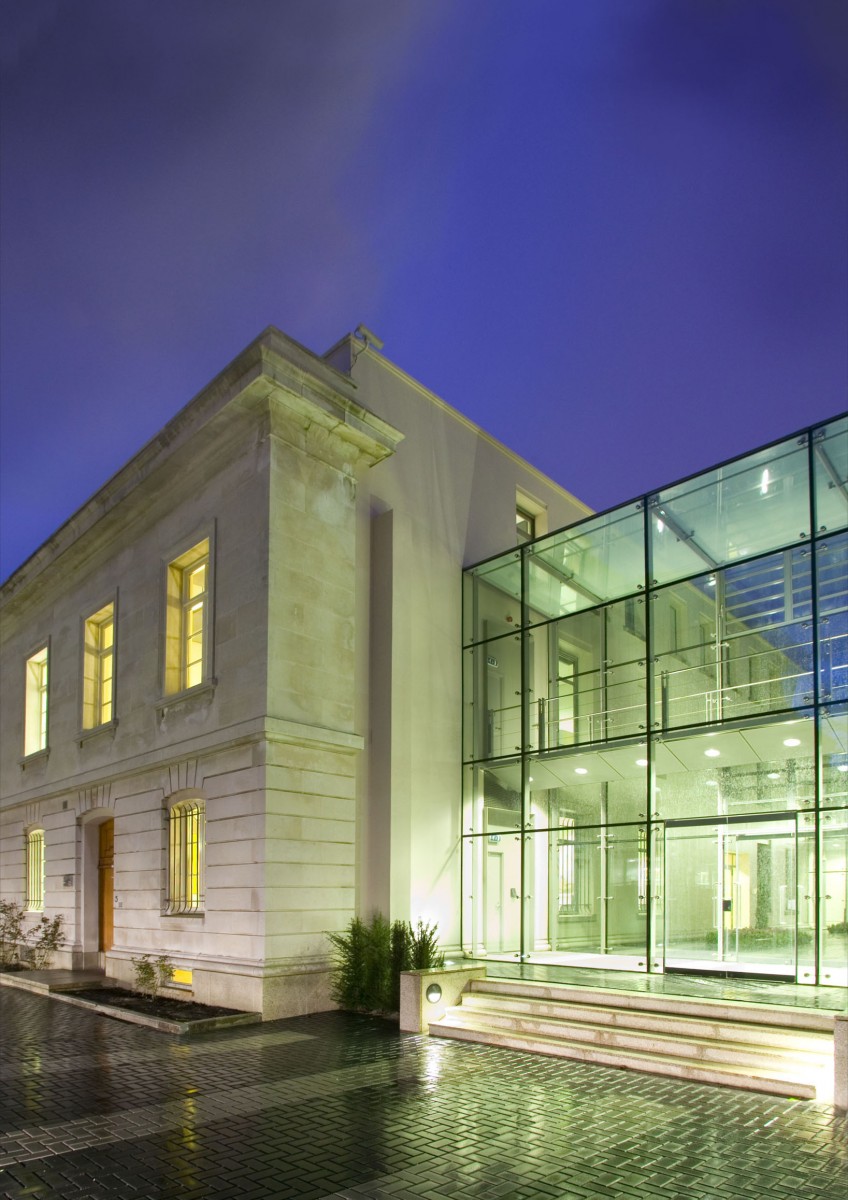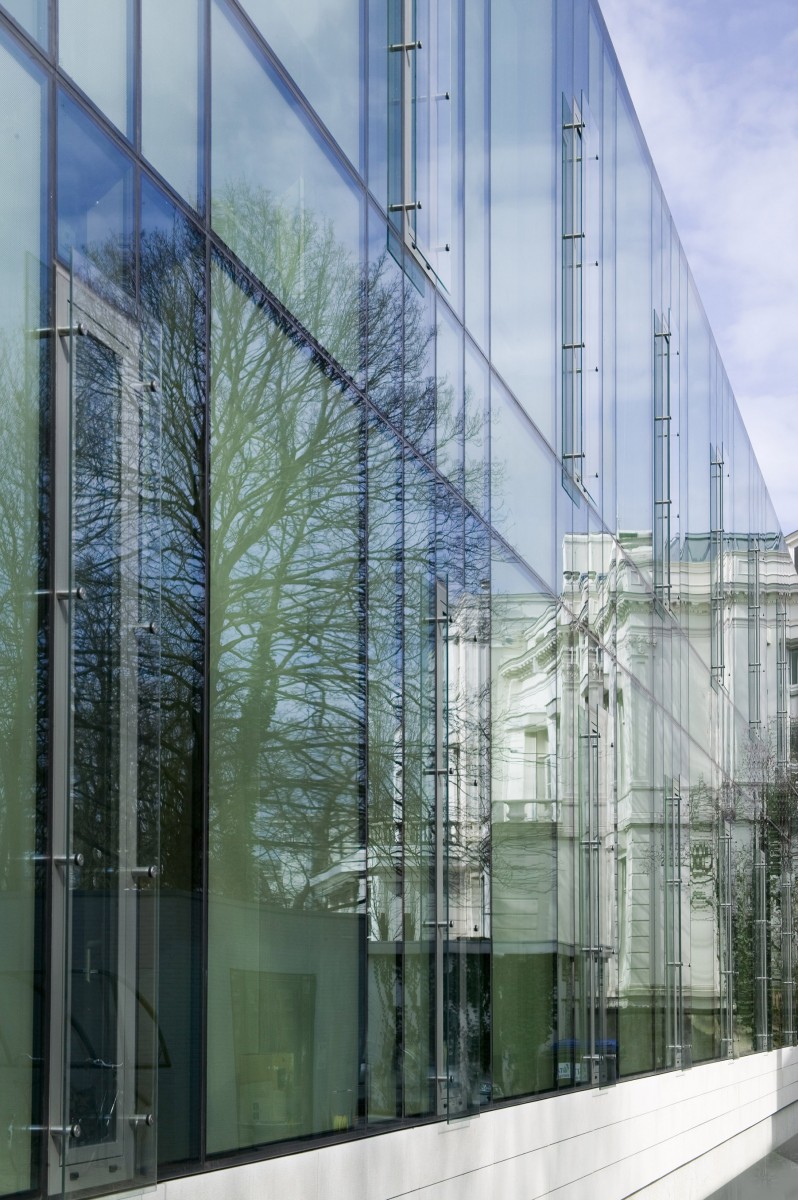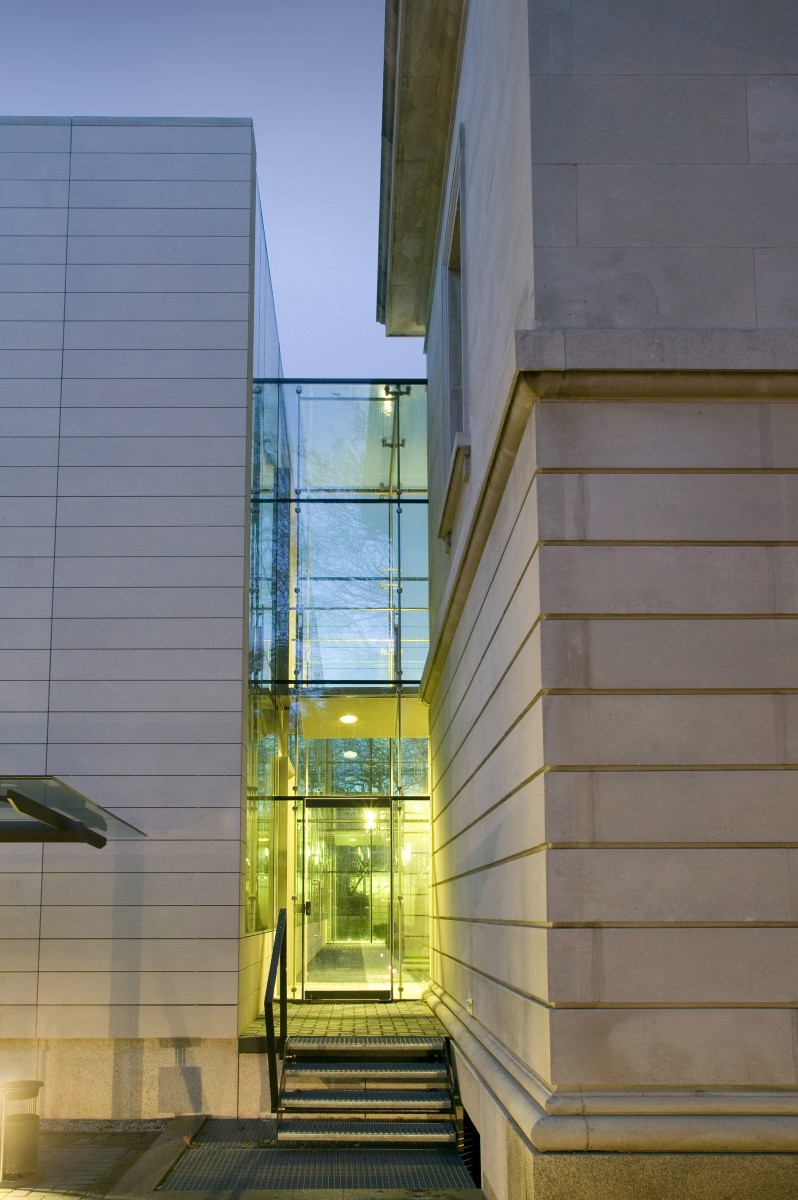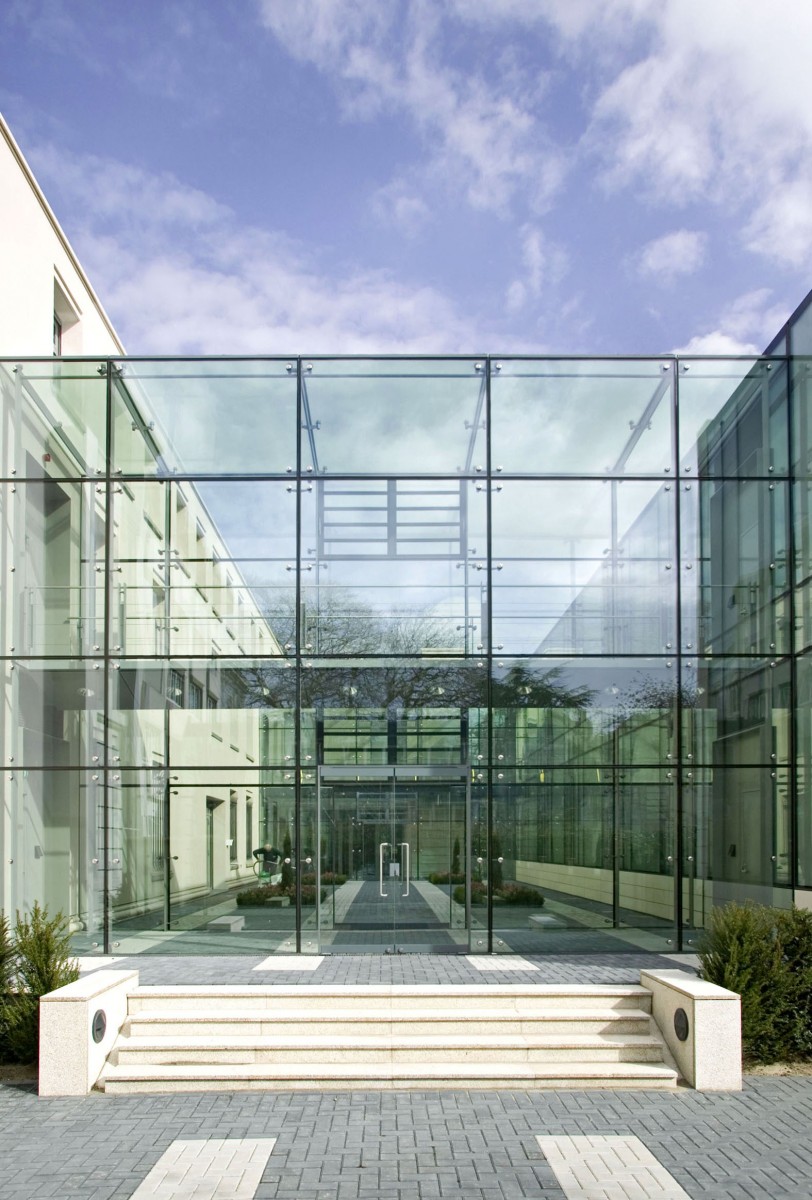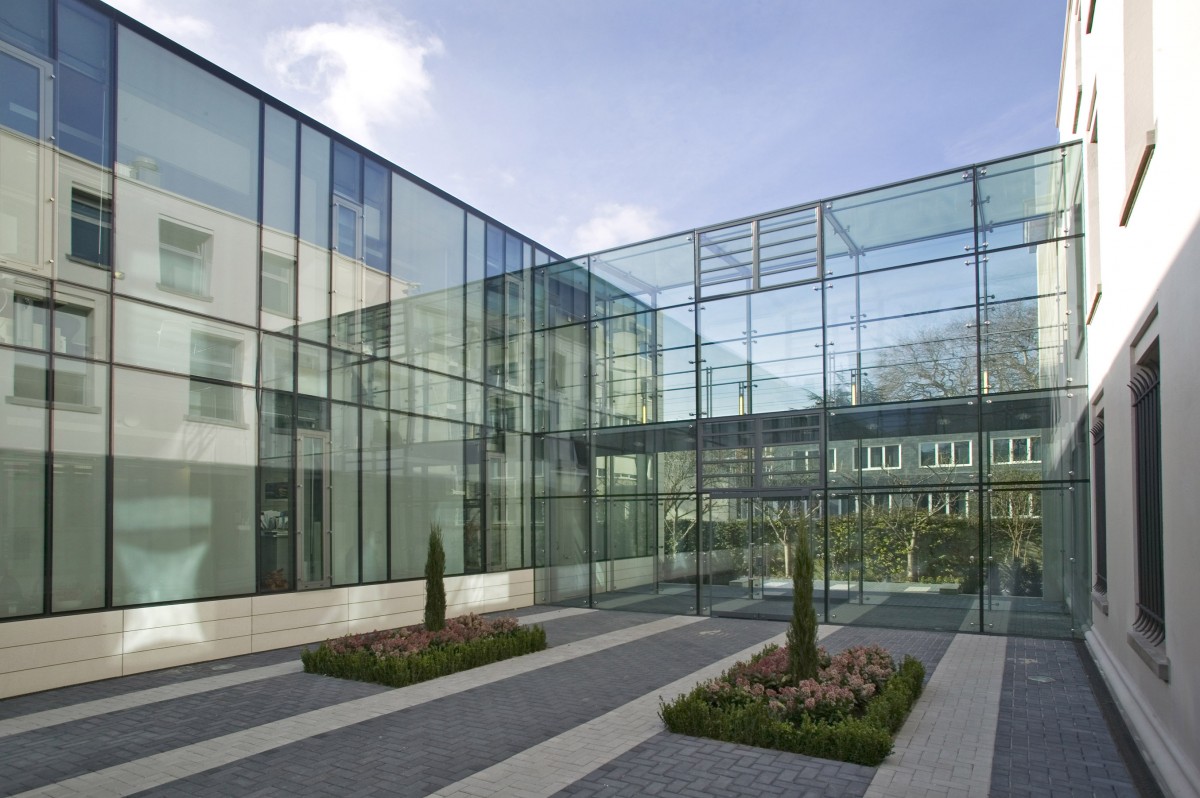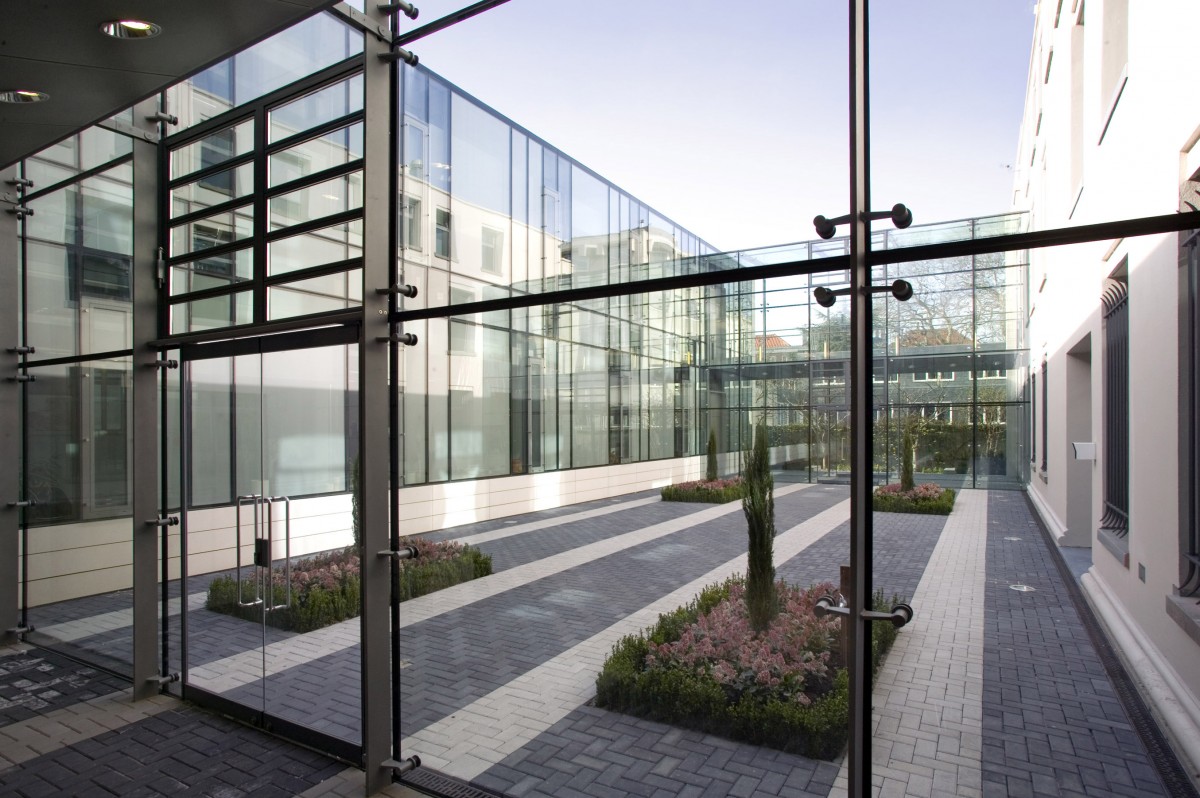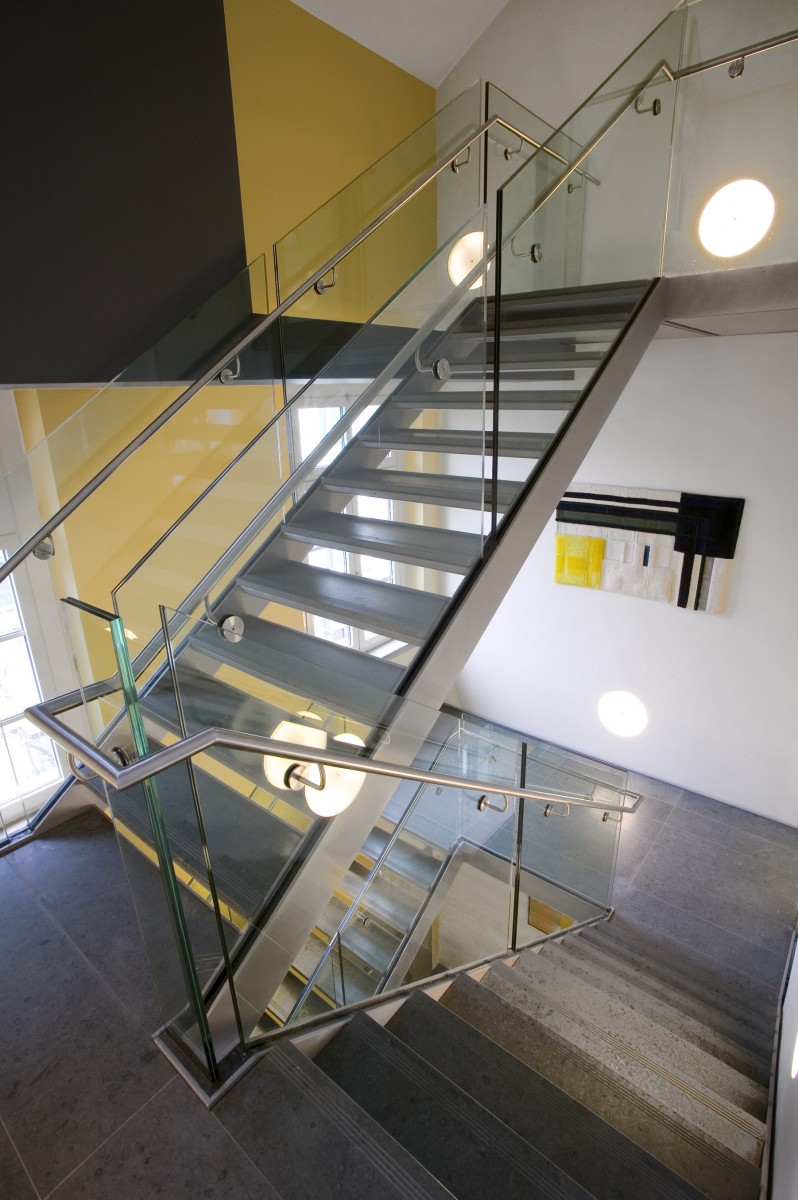The Canadian Embassy in The Hague has been substantially renovated and expanded. The existing building from 1955 is located in The Hague in the midst of historic construction. This neighborhood is characterized by 19th century white villas in the Palladian style and is spacious situated in the green with Horse Chestnuts planted around two main axes. The Canadian Embassy engages with the villas of Palladio in its architecture, but the style is more related to that of U.S. government buildings. On the street side the building is executed in natural stone, unlike the 19th century plastered neighboring buildings. The two-layered volume, coated with French limestone, rests upon a plinth of granite.
This plinth, the large floor height and the coating with granite and limestone are repeated in the new building as an autonomous volume. The offices in the new building feature double height glass facades. Behind the large parts of the glass is a white screen that works as patterned curtains and blinds.
The existing and the new building are connected by two corridors, which enclose a patio. These connecting elements are as transparent as possible. The slender supporting structure derives its stability largely from the steel walkways on the first floor. In the existing villa from 1955, the wooden frames are replaced by aluminum, with a profile that respects the original situation. In the villa only the room of the Ambassador remained unaltered. New staircases have been placed in new positions and the layout of the office rooms has been modified.

